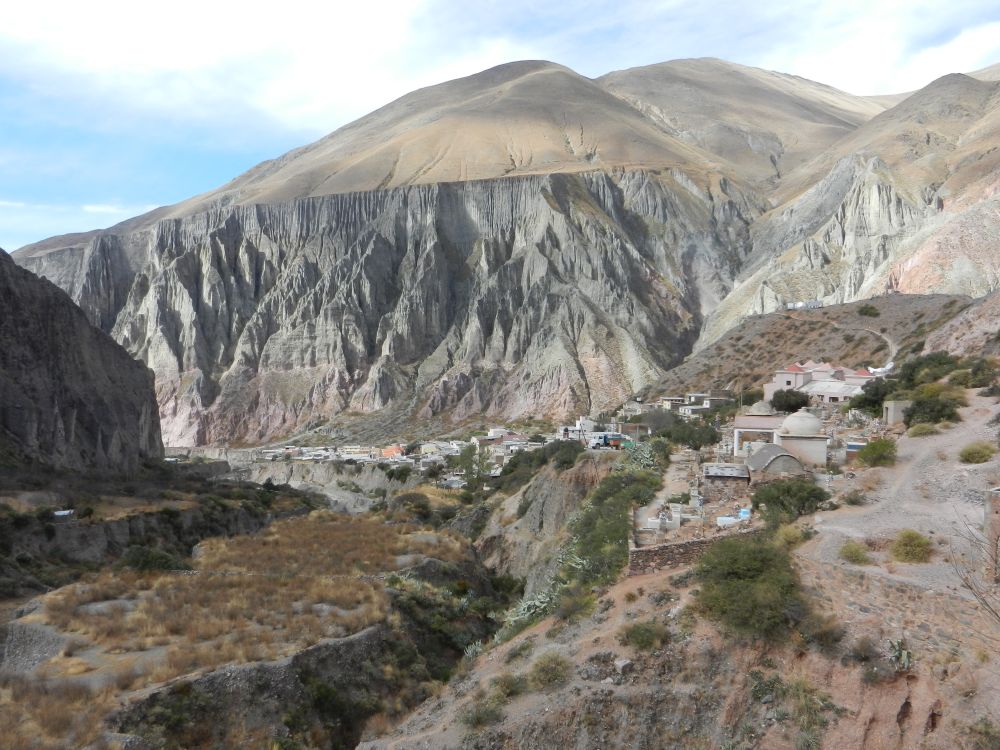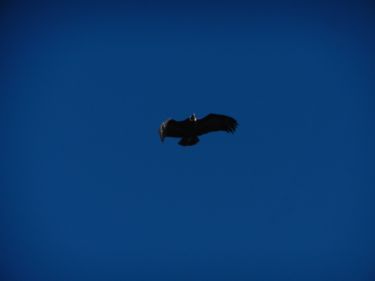Argentina
Dulcinea is safely in the care of Sr Sandoval and the employees of Piersalvador Marina in Bahia, Brazil. Jan & Dave flew south for some land travel in Argentina.
Having attempted French, talking to Sandoval, and Portuguese to everybody else in Brazil, we confirmed that Argentine Spanish sounds quite different from Spanish further north. Any language skills collapsed.
Buenos Aires is a busy city with an incredible amount of past packed into a short history. Having been founded by the Spanish in the 1500's, BA spent 200 years as a partial backwater since the Spanish Monarchy required all trade to pass through Lima and Panama. Pirate trade sounds to have been its main business.
Buenos Aires is decaying, and damp with extravagant architecture falling to bits. There is more French influence than we expected. It is proud and cultural with more music shops and top-quality performers than you would think sustainable. It is young. There were strikes and demonstrations many days. It was full of pizza houses, nice restaurants, and polite people, and mattresses on the street outside the opera house.
On Sunday, we walked round San Telmo where the market was packed with old crockery & silver cutlery, books, and relics that would water the mouths of those who watch "Antique Road Show". Beside the square, the guitar playing was fantastic, the ice cream was good though expensive, and the Tango dancers looked as if they had been really good 30 years ago.
We took the guided bus tour, saw many of the districts, walked past Evita's tomb, and yes we went to a tango dinner theatre that was a magnificent act of dance and athleticism.
Then we flew NW to Salta and took a bus up into the high country towards Bolivia. There is one peak over 6,000 metres in the region, but mostly dry eroded high rounded country with startling mixtures of green, grey, pink, and red rocks.
We walked and mountain-biked around Tilcara, then took a bus further north to Iruya. We were quite happy to get off that bus safely. At the pass over 4,000 metres the conductor handed round coca leaves and stirred some of the passengers into a rowdy party mood. The driver joined in while throwing the bus from one hairpin to the next on a rough dirt road with several hundred metres of shear drops below.
However Iruya was pretty, friendly, & peaceful. The country would be vast rolling hills at about 4000 metres above sea level with occasional peaks poking up, but it is incised with precipitous valleys cutting 1km deep and isolating blocks of high scrub pasture.

Walking, or occasionally horse riding, are the traditional & only practical means of transport between the indigenous villages.
We walked to San Isidro and were told that San Juan was a further 4 hours (this was amended to 6 considering we were mere northerners).
The paths are sometimes washed out, and can be hair-rasing at times, with immense drops below. Here condors fly high over our roof terrace every afternoon. They live off carion and must be testament to the number of animals falling into the deep gullies.

In this world, there are well-informed, intelligent people who know what to expect. There are people who realize that June is winter in Argentina and so less busy with tourists. There are some who travel into the Andes famous for sun-worship, and are disturbed by drumming and cheering through a night on the Tropic of Capricorn, then need to be reminded it was the night of the solstice. David & Janet belong to the last group.
Besides the solstice, 20 June is a public holiday commemorating the death of Manuel Belgrano, who designed the Argentine flag, so everywhere was draped with light blue and white (even more than the Federation Cup football tournament would warrant).
On our last day we hired a "remise" (taxi without metre) and were driven past Purmamarca to the Saltines (salt lakes about 3500 metres above sea level) to see salt mining and more spectacular rock colours with greys, greens, pinks, and reds lying on top of each other.
We were dropped off at the Gargantua Del Diablo where Tilcara's water supply starts. There are 2 waterfalls over 100ft high plunging into a very narrow canyon.
Back in Salta, we visited the museum of Archeology in the Andes where the most important exhibits concern the 3 Inca children found and recovered recently after being buried alive just over 500 years ago at the top of the volcano Mt Llullaillaco 6739M (yes 22,000ft) above sea level. The mummified body and clothes of a 6 year old girl were on display, & amazingly well preserved by the cold, dry conditions. She had been buried with her 7 and 15 year old companions after walking all the way up.
David & Janet
PS
We actually arrived back in Calgary 1 hour ago, and Neil came to meet us at the airport. We were surprised to see Toronto covered in puddles this morning.